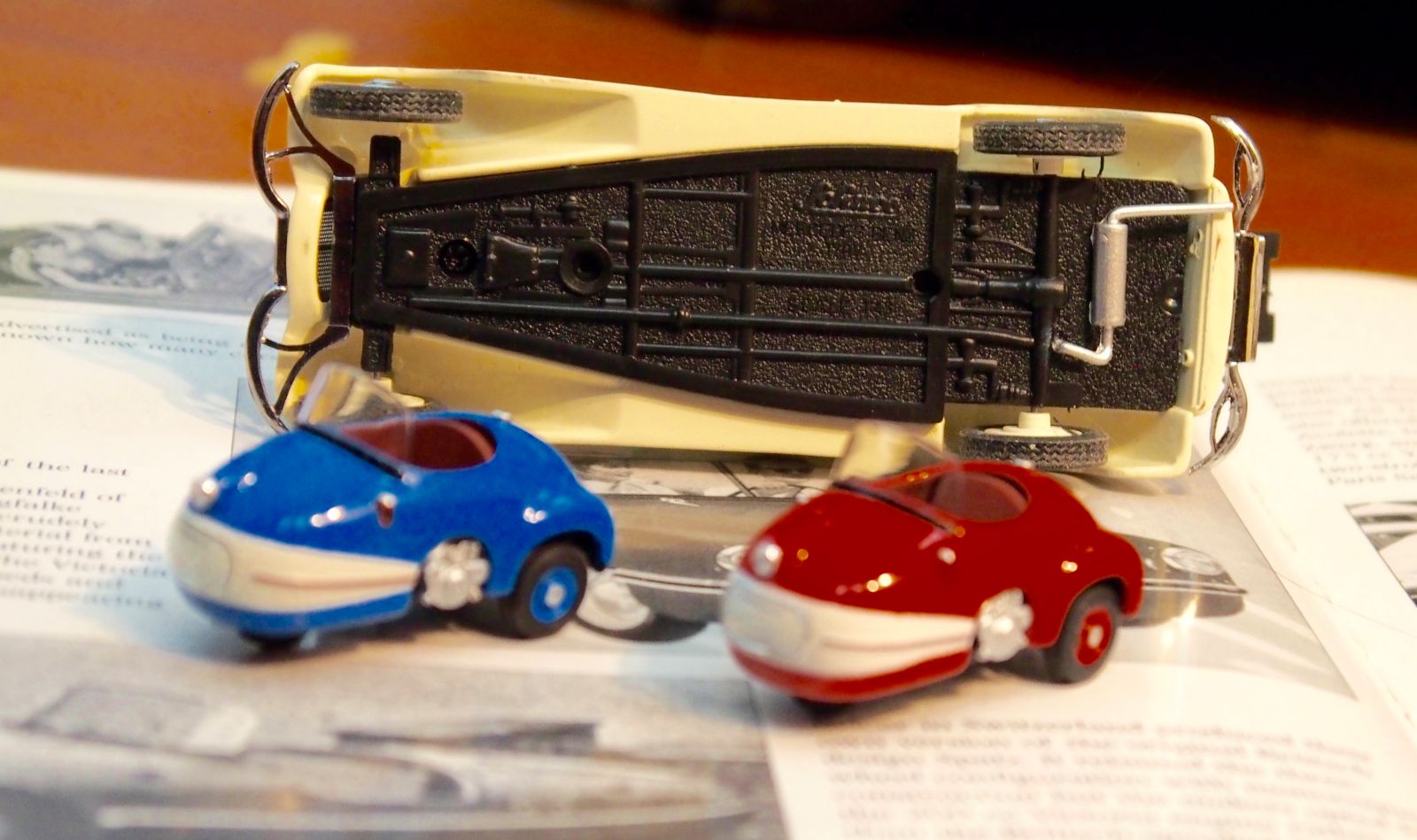
Cars come in all sizes, from the huge Hummer, to the petite Peel. Big cars are en vogue right now, but for a time in Europe after WWII, tiny was in. And here we have the tiniest ever made. (Well, the Peel P50 is actually a tad smaller, but it had a roof and wasn’t as cute.)
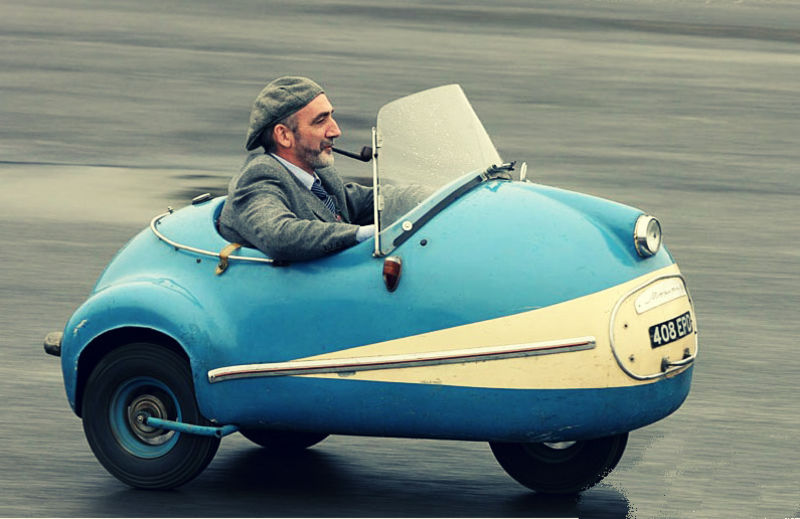
That’s the Brütsch Mopetta in maybe the coolest photograph ever taken. It was a fiberglass tub on wheels that was actually sold to the public as a form of cheap transportation. Despite much effort by its creator, Egon Brütsch, to sell a license to manufacture them, only 14 were built by Brütsch himself.

I wrote a longer piece about Brütsch for Oppo a couple years back if you’re really curious about a shyster who bankrupted several folks with his whimsical, but janky microcar designs.
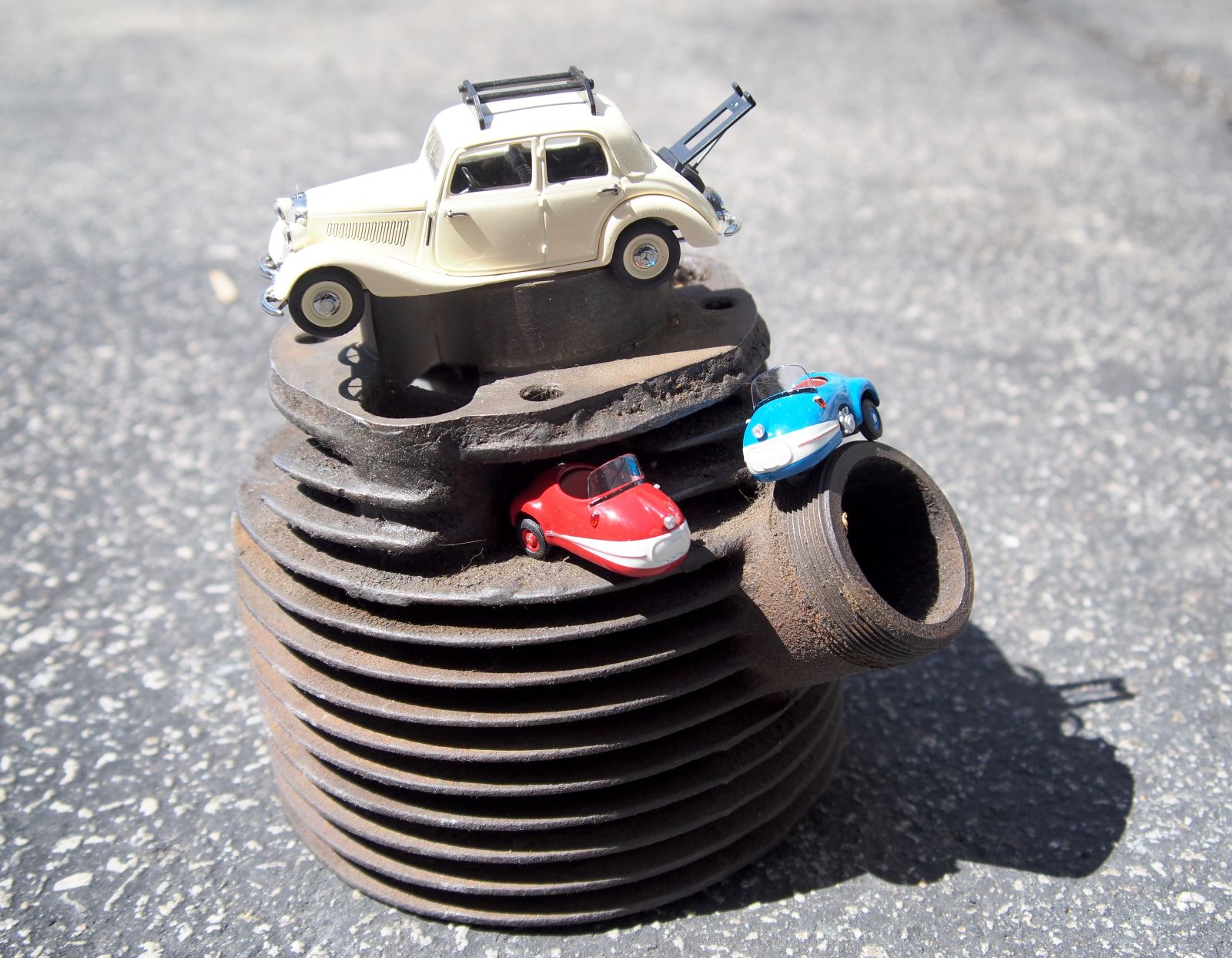
Egon Brütsch was a playboy who, unlike most Germans after WWII, was rich thanks to his parents’ nylon stocking empire. He used his money to find some success in motorsports, racing pre-war Maseratis in 1947 and ‘48. Egon won a bunch of races because he could afford the fastest car. When automobile technology finally surpassed him, he quit the sport and began looking for business ventures.
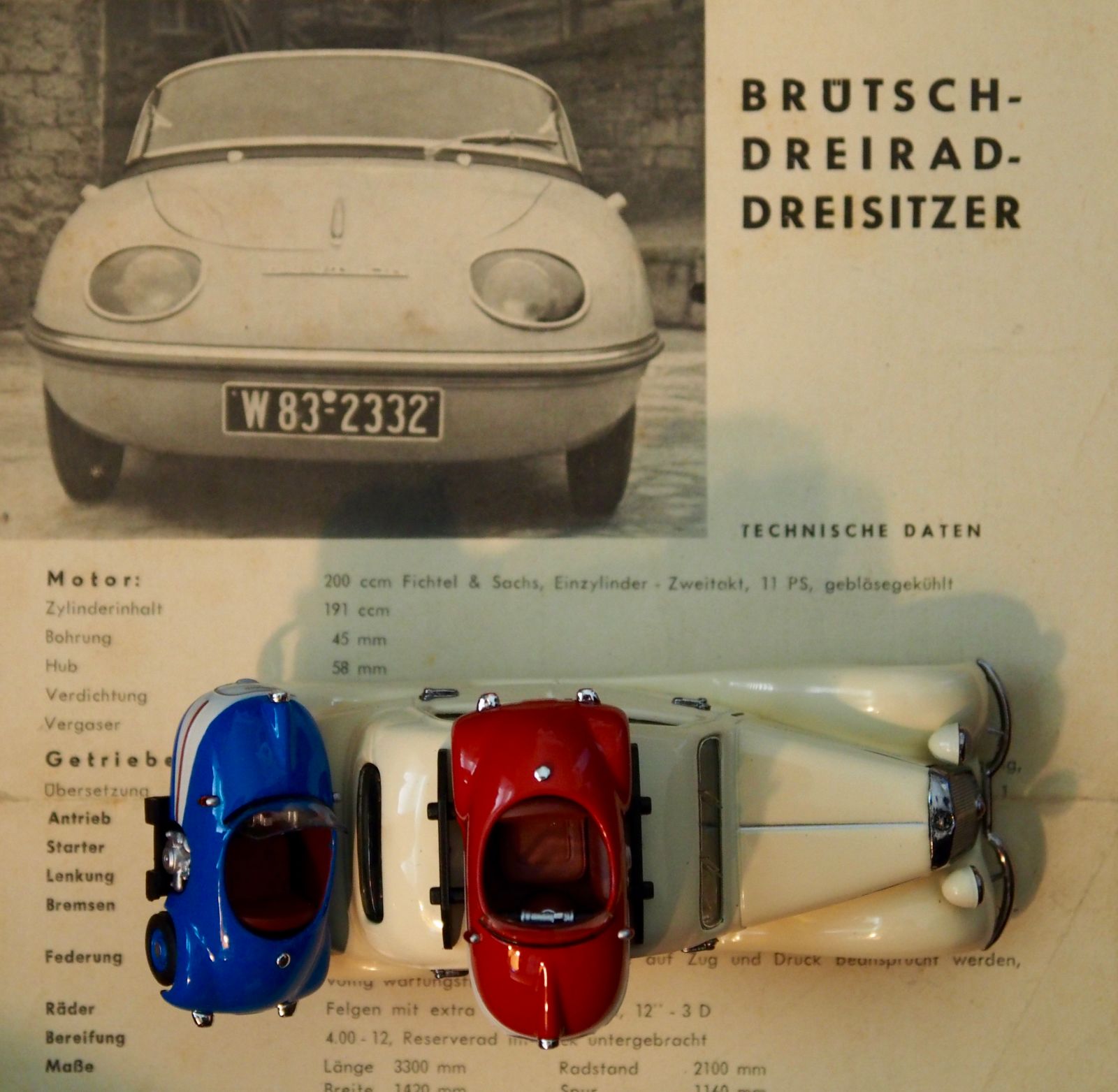
He found one in the new technology of fiberglass, and the postwar need for economy cars. Microcars were all the rage thanks to no one being able to afford anything else. But, starting a car company from scratch was hard especially in an environment where raw materials were hard to come by. But, there was a new solution to this quandary that hadn’t yet found its way to European car makers. After only reading about the stuff, and without any kind of laboratory, Brütsch came up with his own formula for glass fiber reinforced polyester in about a year. What impressed him most about it, besides the cost, was that it could be moulded into just about any shape.
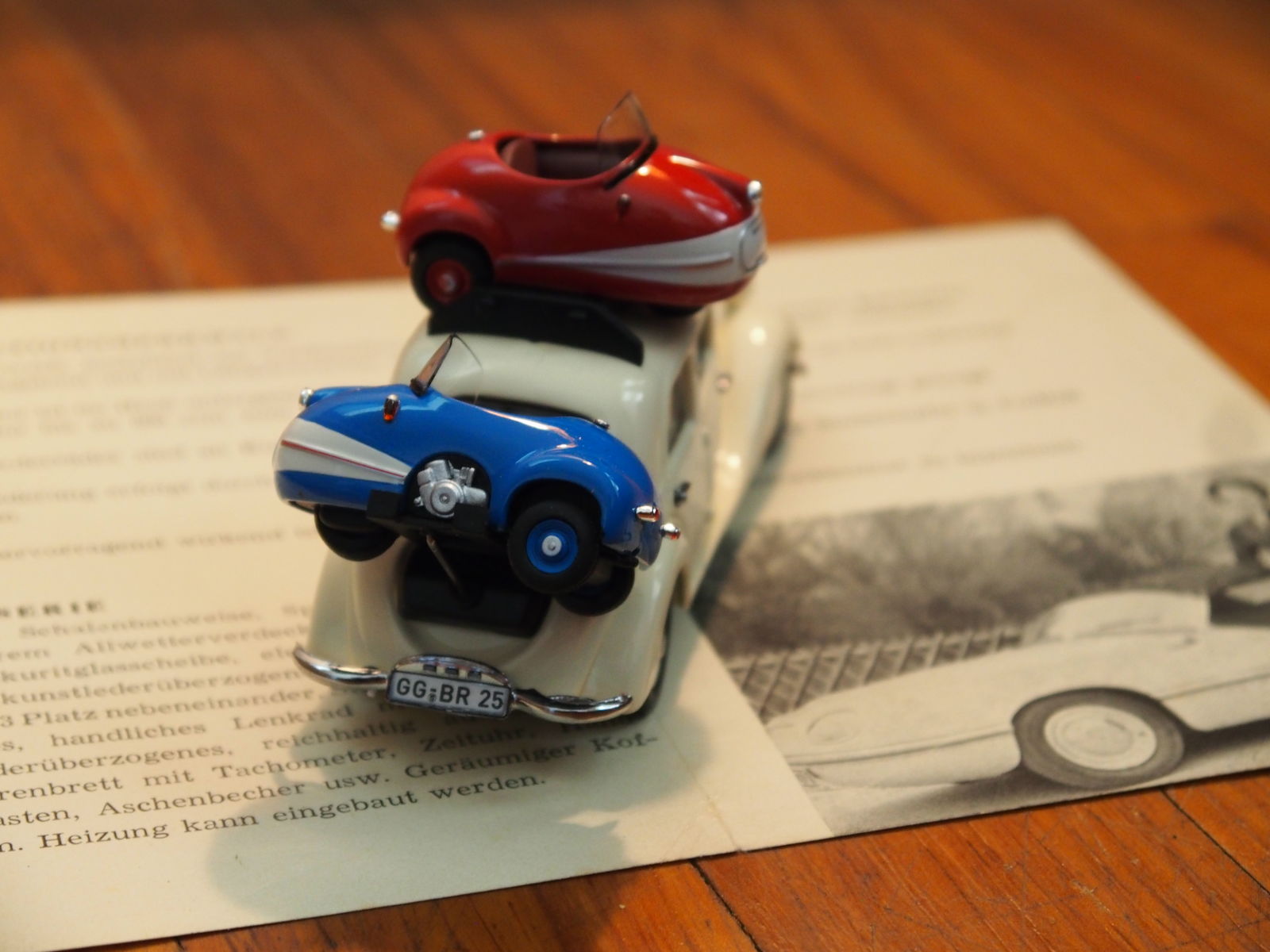
So, he let his imagination run wild and started designing, and building, wild little cars that looked like they belonged on The Jetsons.
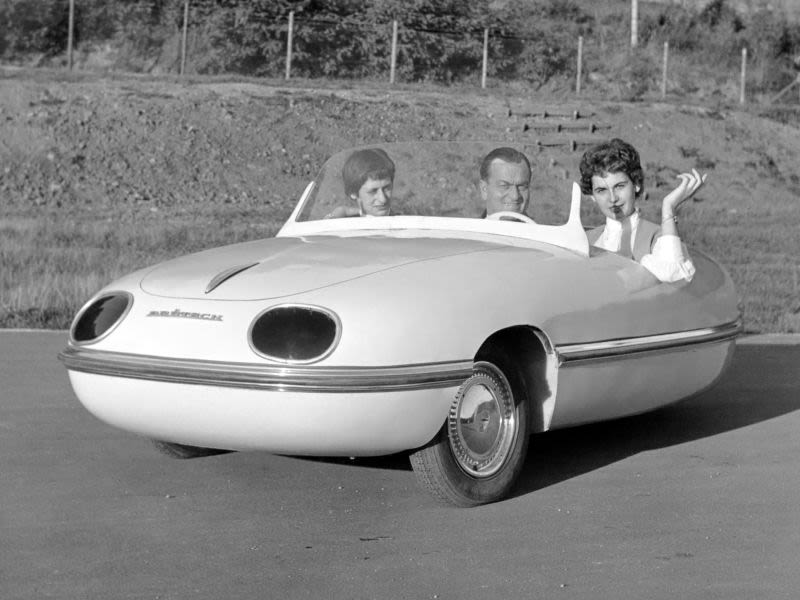
Unfortunately, Egon was no engineer and he stuck those fanciful bodies on rudimentary, and poorly designed chassis. Or, sometimes no chassis at all. The one above, the Spatz, has two subframes attached directly to the fiberglass that made it completely unstable both as a driver and in structural integrity. He sold a license to build them to two companies. One, the Victoria motorcycle company, had to drag Hans Ledwinka out of retirement to completely redesign it when they realized it would fall apart after just a few miles. The cost of this put them out of business.
The other company was a Swiss manufacturer called Belcar who also went under after building around 10 of the original design. The Swiss government actually forced them to stop manufacturing it.
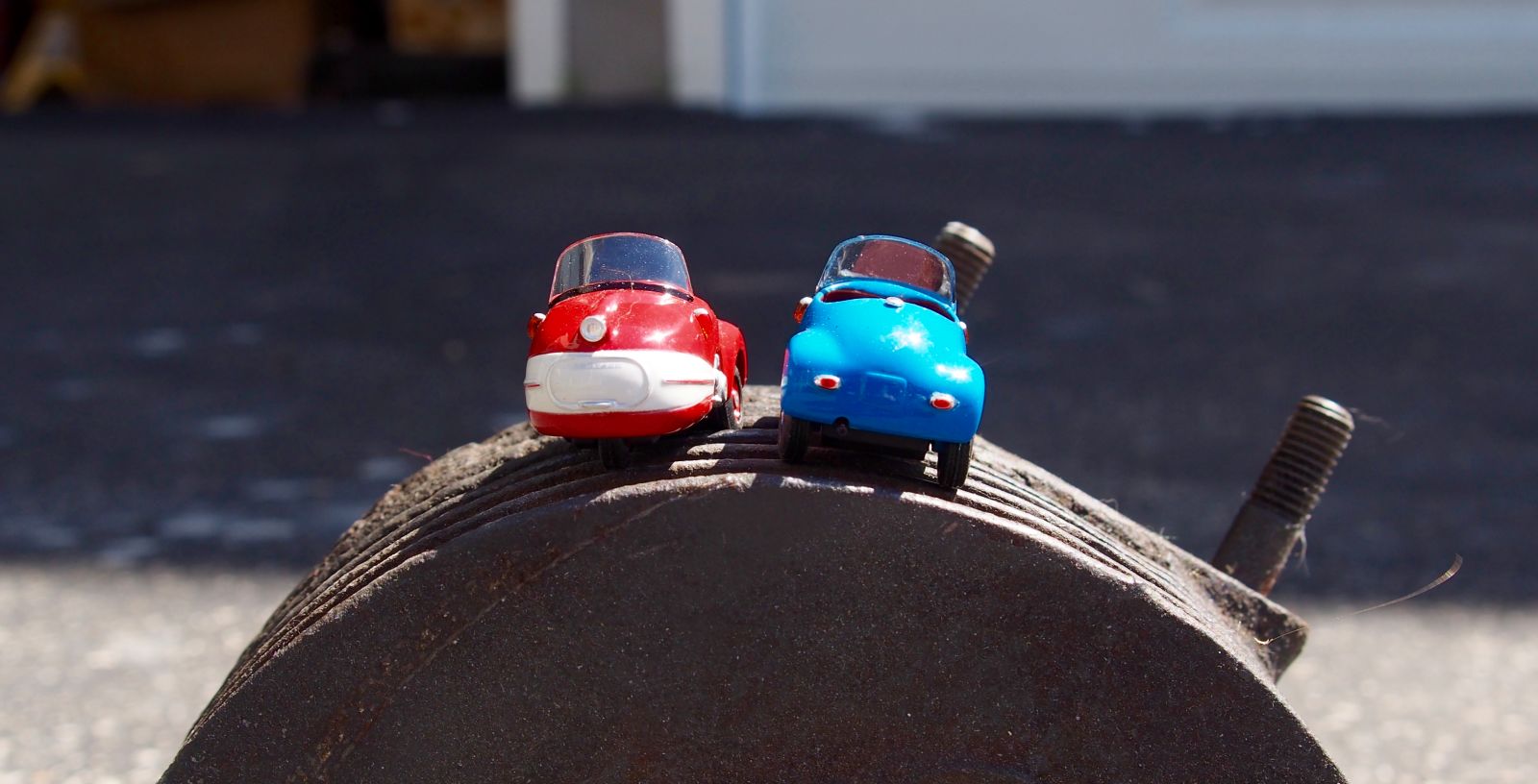
This didn’t deter Egon, though, and he kept making prototypes for tiny little contraptions and bringing them to auto shows to peddle licenses to produce them.

They had names like Zwerg and Pfeil and came in a variety of small sizes. One was even called the V-2 which was a bold choice for a post World War II German car. As you can see, they all had an actually innovative piece of design. They were built like a clamshell with a strong rubber gasket that ran down the middle holding the two halves together. This made the things easier to produce, and did give the bodies a modicum of rigidity.

Brütsch’s masterpiece, and most famous creation, was the Mopetta which, unsurprisingly, was advertised as The World’s Smallest Car.
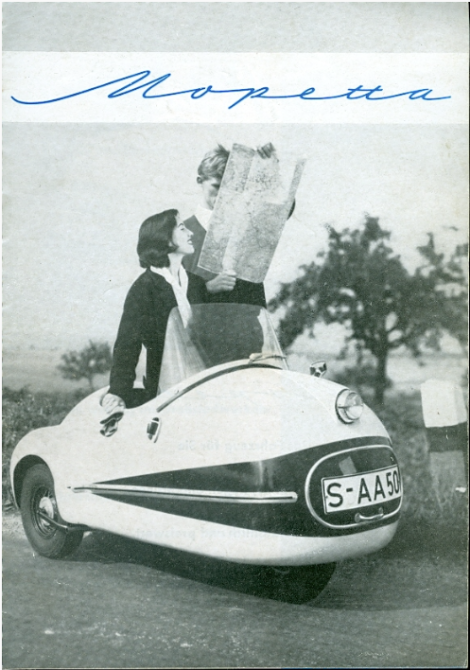
Egon was bringing a slightly larger version of the same design called the Rollera to motorcycle shows when he hit upon the idea of making the smallest car ever. He wanted something to attract people to his stand at the Frankfurt Motorcycle Exhibition where he planned on showing the Rollera.
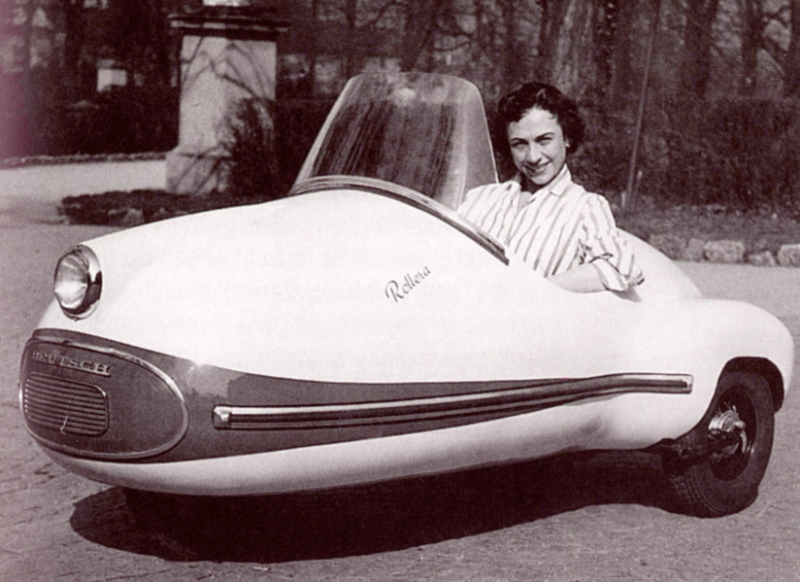
So, in his hotel room one night, he mixed up some fiberglass and sculpted it into something just big enough to fit his faithful secretary. He let it dry and then stuck it on a shelf high above his stand at the show with some wheels leaning against it and started calling people over to see the world’s smallest car.
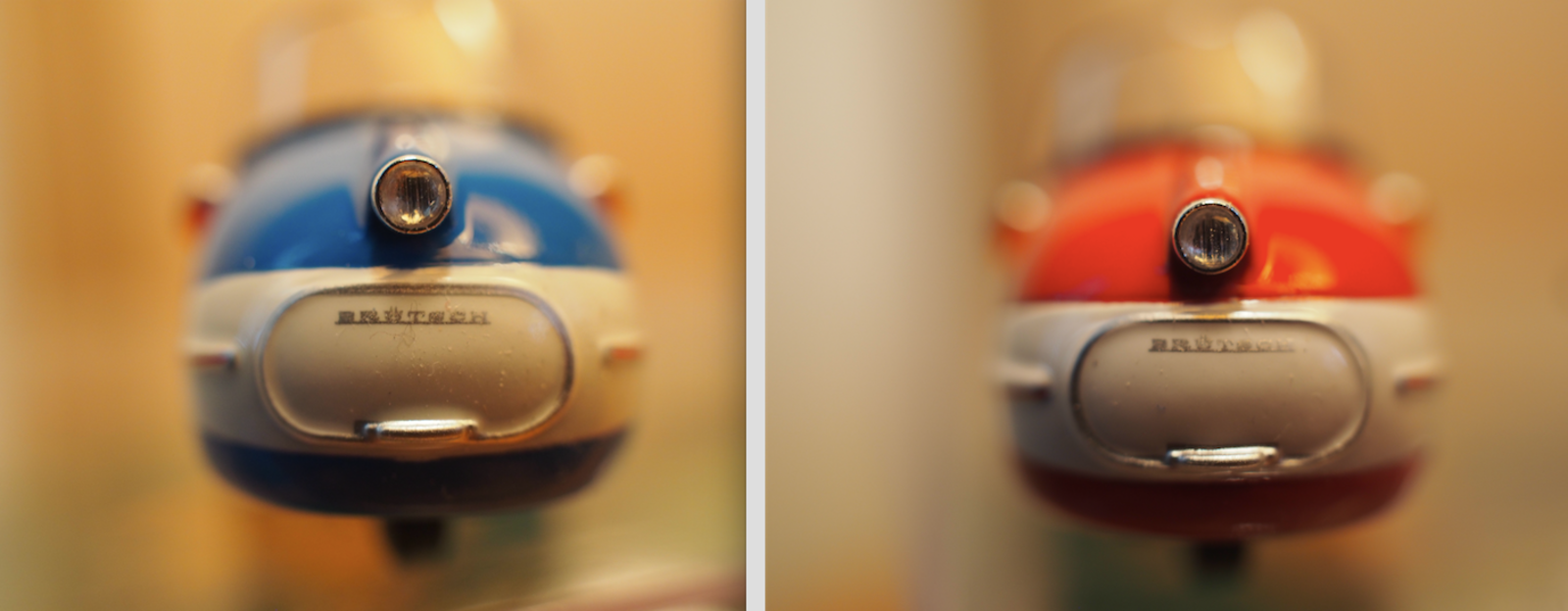
Of course, it got all the attention. No one was interested in the world’s almost smallest car. Egon was sure he was onto something. He started driving around the exhibition in the Rollera with the Mopetta mounted the back. People were enthralled. So, Egon took the Mopetta on the road.

And there’s the set up Schuco has reproduced here in 1:43. That car in the middle is the Pfeil, one of Brütsch’s largest designs. All his cars were powered by tiny two-strokes ranging in size from the Mopetta’s 50cc’s up to 250cc’s for the Pfeil and Spatz.
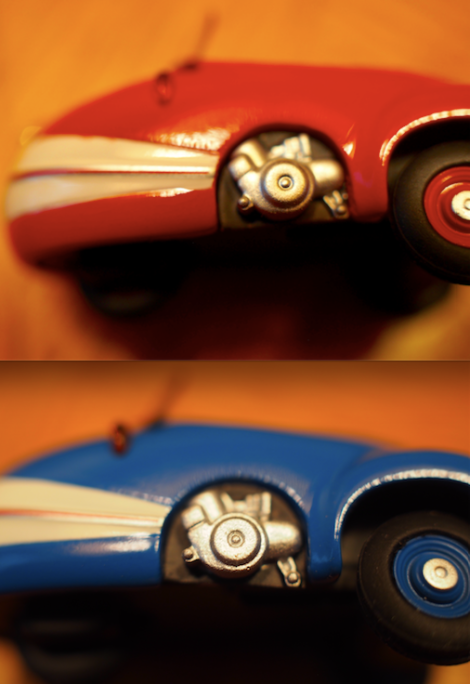
The car hauling the pair of Mopettas is a 170 V which was Mercedes’s 4 cylinder workhorse, and their best selling car in the years just before and after the war.
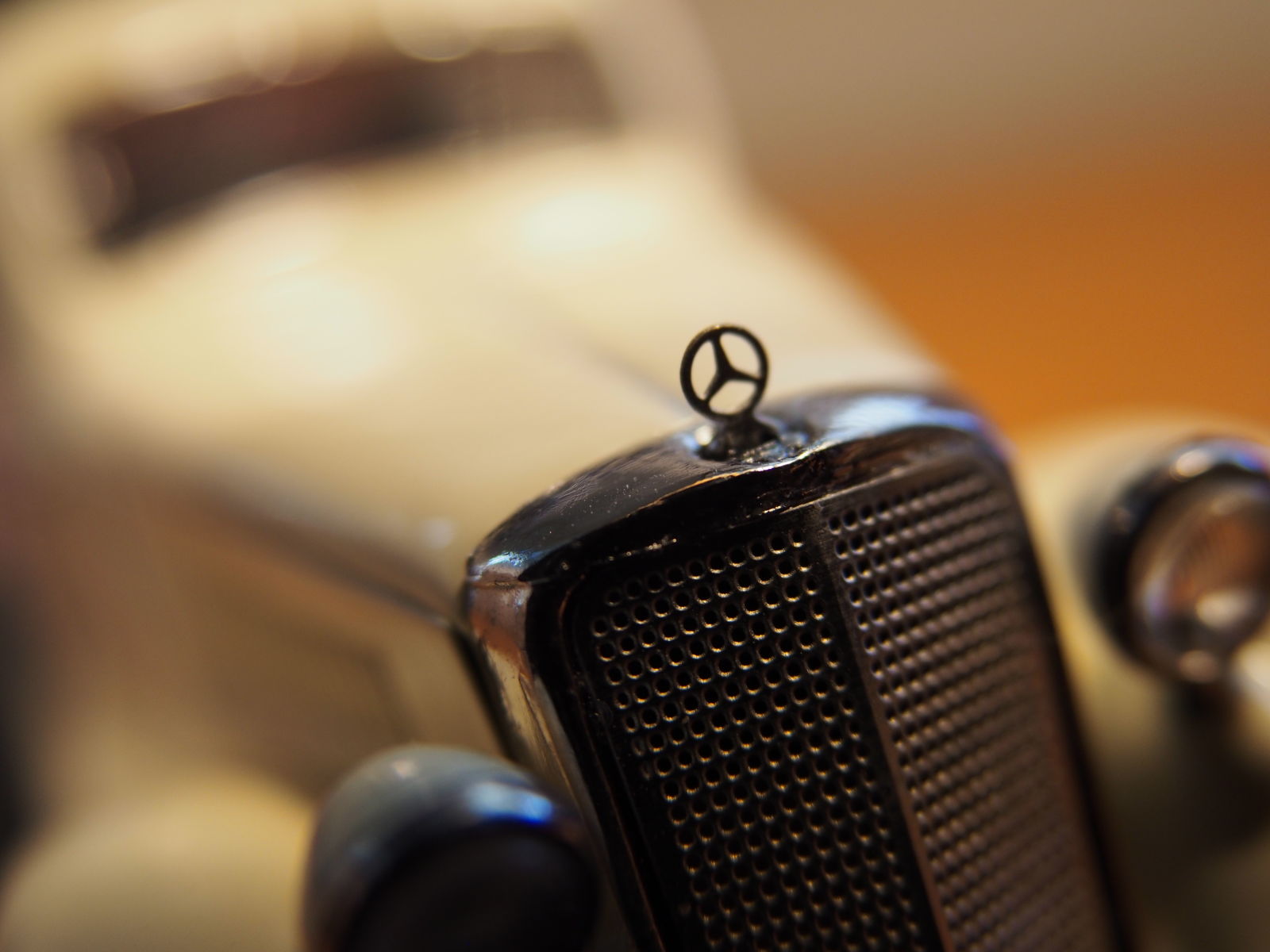
As for the Mopetta, Brütsch designed a tiny triangle ladder frame for it, and gave it a 50cc single cylinder Ilo moped engine with a kickstart. It was small enough that the rudimentary engineering was fine this time. Despite all the attention it got wherever it went, no one wanted to take a chance on manufacturing it. Except Opel. Georg von Opel loved it and had a contract drawn up for a production license which was nearly signed until he, or his board, came to their senses leaving us (well, me) with one of car history’s great what if’s.
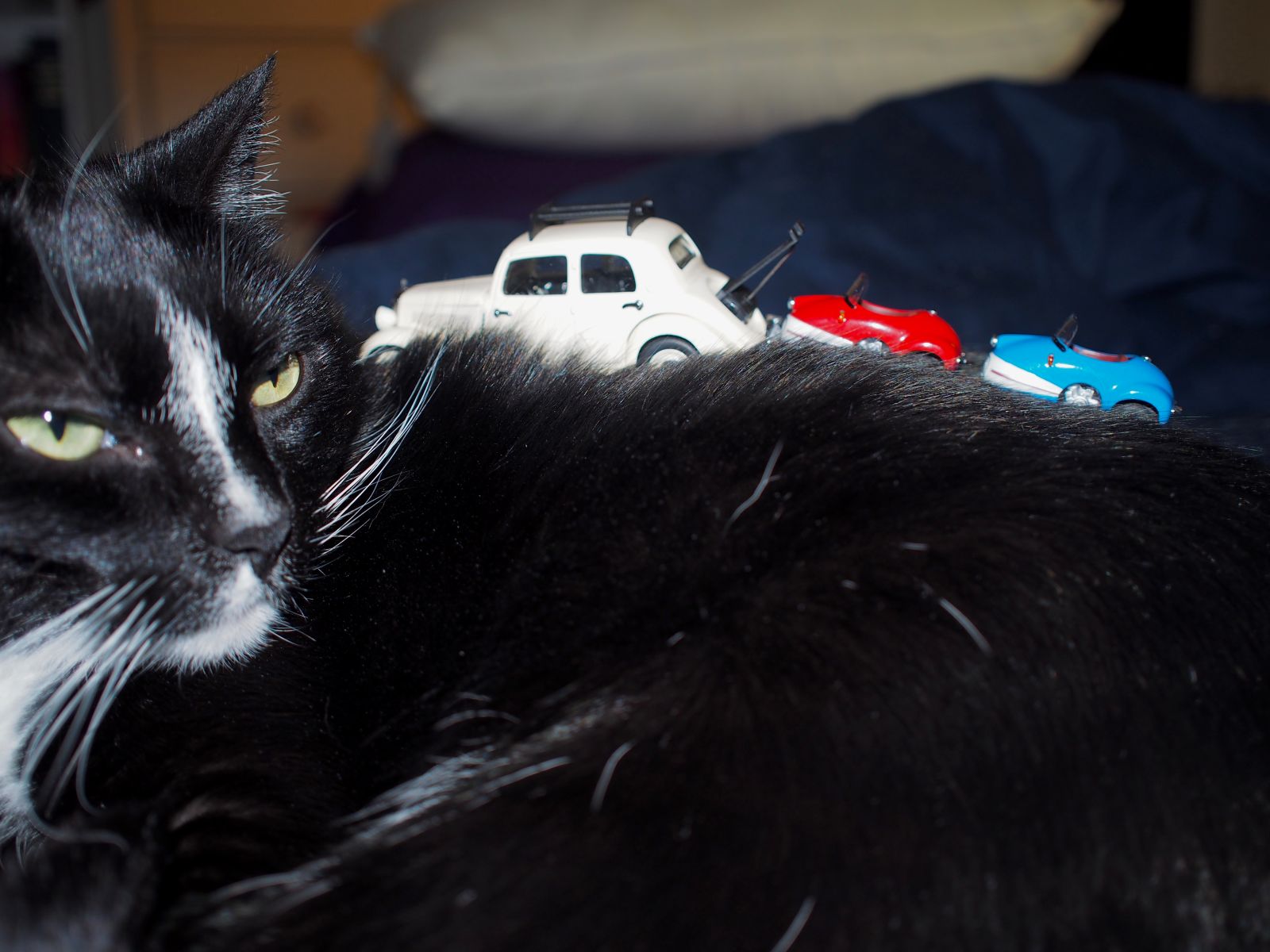
Later, an Englishman lost his life savings trying to bring Brütsch cars including the Mopetta to the U.K. Egon himself did build 14 Mopettas on his own as I mentioned. Most of them were actually sold out of a motorcycle shop in London, so I guess everyone who ever wanted a Mopetta had already bought one. Today, the Mopetta is the Holy Grail of microcars. 4 remain and they would fetch almost 6 figures at auction if you can believe it. Egon kept making microcar prototypes for a few years, even bringing one, the Jet, to the New York Auto Show. A few did have short (like barely double figures) production runs in France. Brütsch eventually abandoned cars and started selling prefab houses.
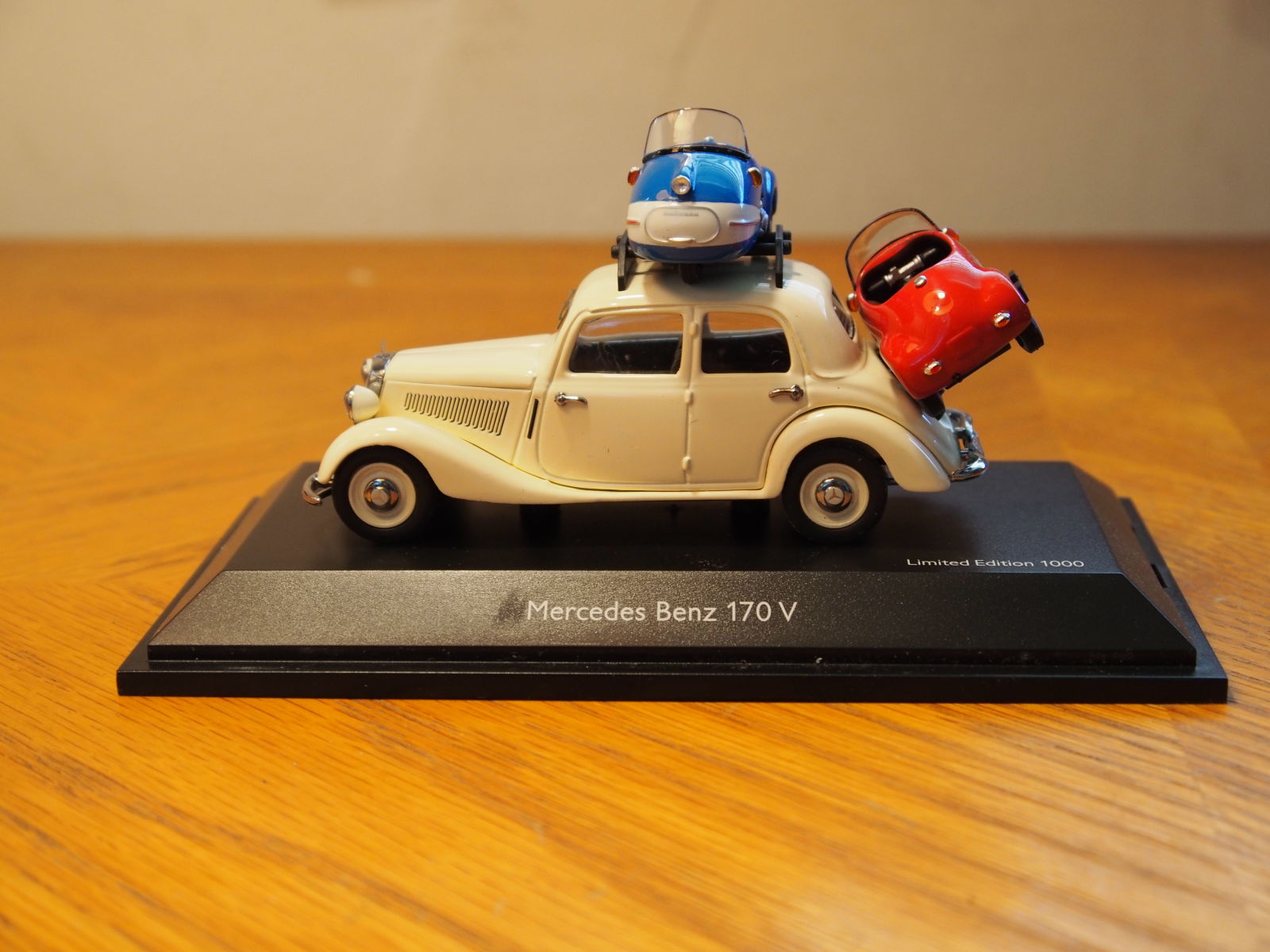
Schuco did a great job with this limited to 1000 model, and it’s worth what I paid for it which was a lot. At least for me. The Mercedes is in diecast metal, and the Mopettas are resin. Everything appears to be right on with the scale. There’s nice detailing especially on the little guys.
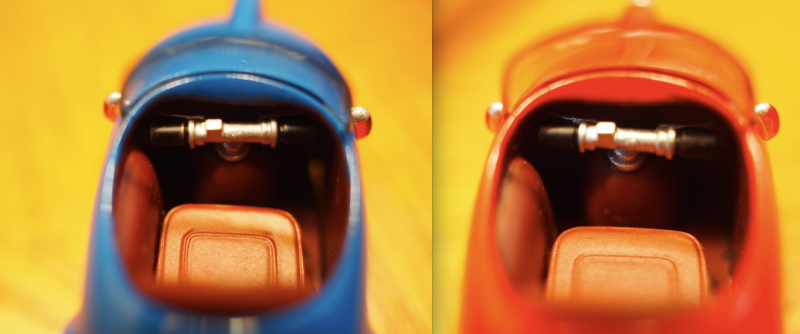
This is a pretty hilarious thing to reproduce and I’m tickled to have it. Kind of a deep automotive history cut that would go well with that VW Transporter with Kleinschnittgers if I could ever find a reasonably priced one of those.
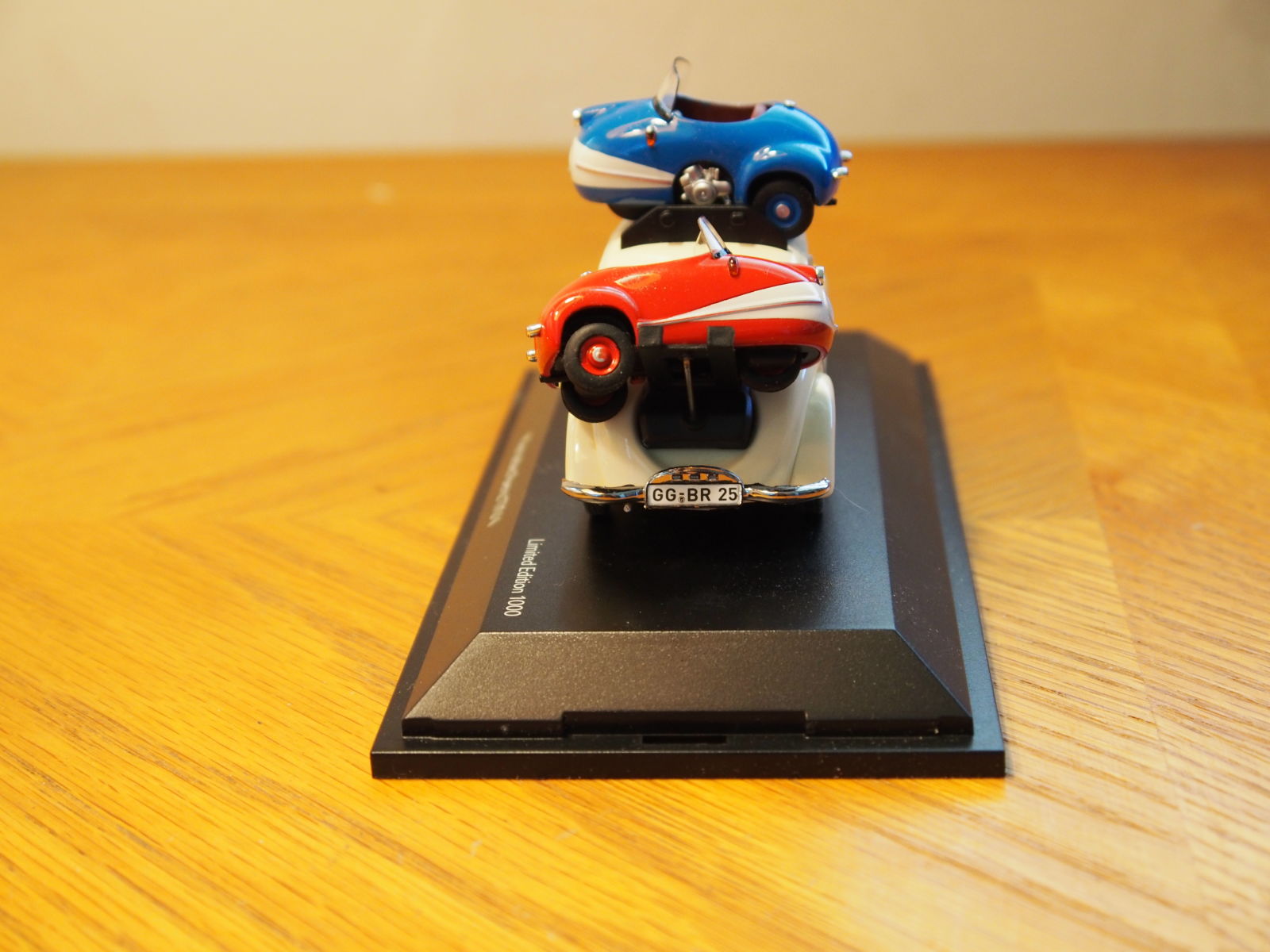

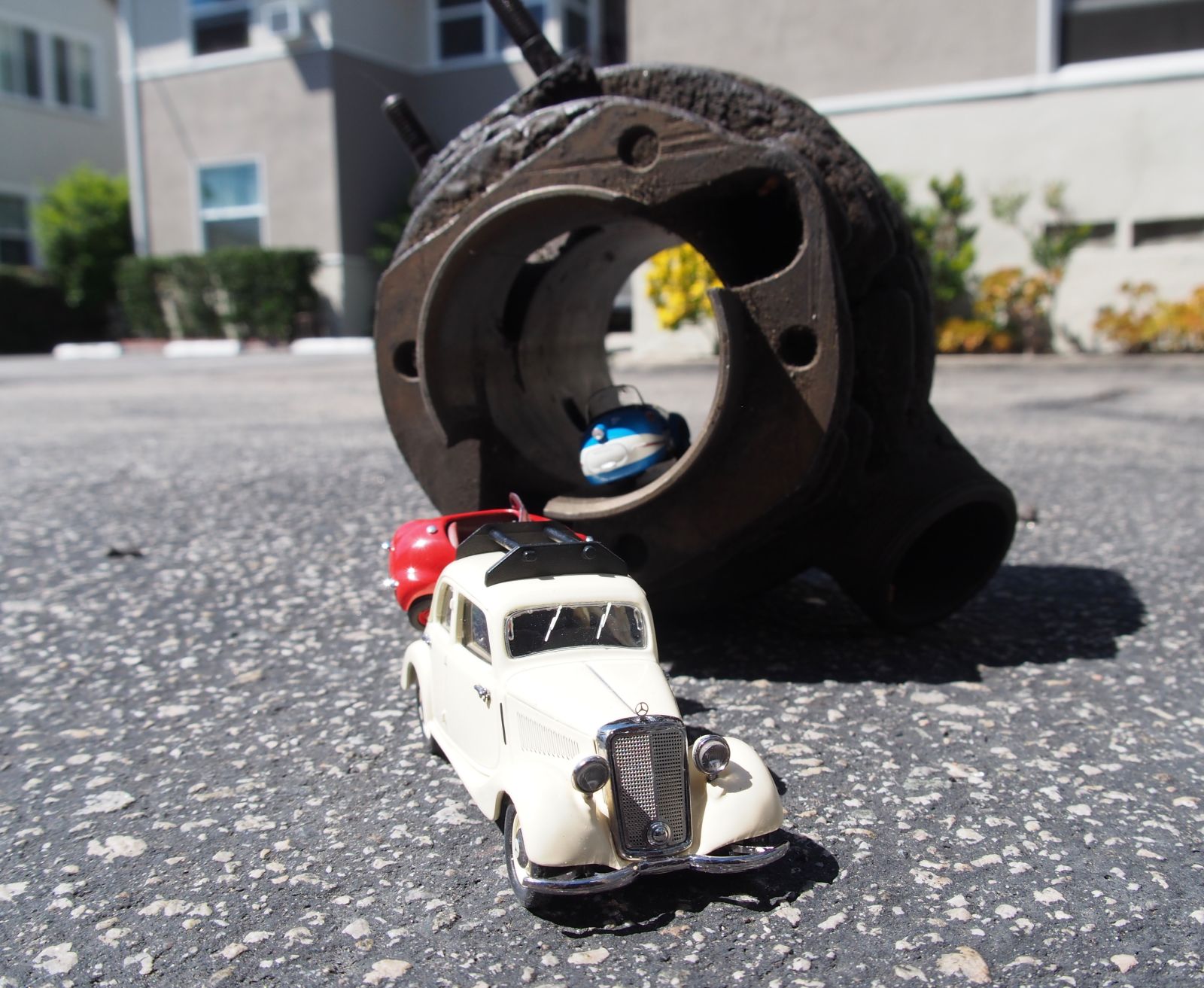
Great Engine Week gang! This was fun as always.
